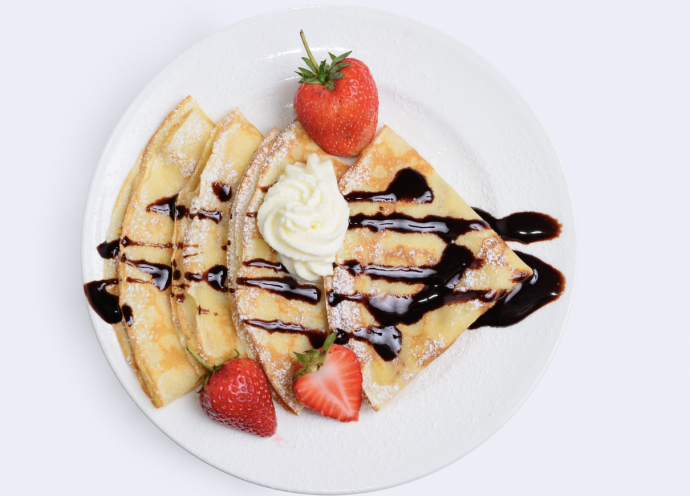8 Tips & Trick to Make Perfect Crepes

The French classic is easy to master if you have the right method and tools at hand. Here are the best tips and tricks you wish you had known earlier. Every cook needs a classic crêpe recipe in their arsenal. Whether filled with rhubarb compote for breakfast in bed, topped with savoury ham and melted Gruyère for a quick weeknight dinner, or flambéed as a crêpes suzette for a decadent dessert, the humble crêpe is a blank canvas that can satisfy any appetite. Sure, these thin French pancakes are easy to prepare, but to ensure your crêpes turn out perfectly-evenly tender, egg-shaped, and lightly golden-we're sharing the secrets of chatelaine cooking. Here are 8 of them.
1. A simple crêpe batter
The batter consists of five simple ingredients: Eggs, milk, flour, melted butter and salt. You can whisk the ingredients together, but for a particularly smooth batter, a mixer is recommended. The consistency of the batter is crucial: it should be slightly thinner than whipped cream and have no lumps. For a sweet crêpe, add sugar and vanilla; for a savoury crêpe, add chopped herbs or grated Parmesan.
2. Rest for 30 minutes
When the dough rests, the flour can fully absorb the liquid and the gluten has a chance to relax. While it's not the end of the world if you skip this step, it's the secret to the most tender, delicate crepes. Let the batter sit at room temperature for 30 minutes or refrigerate for up to two days. (If you make the batter the night before, you don't have to worry about bringing it to room temperature before using it.) After resting, stir the batter before baking, and if it seems too thick (this sometimes happens when the flour is fully hydrated), gently add a tablespoon of milk with a whisk until it reaches the right consistency.
3. Crêpe pan vs. frying pan
A well-seasoned crêpe pan is ideal for making crêpes because the short sides make them easy to flip, and the heavy bottom ensures even heat and even cooking. If you don't have a crêpe pan, a medium nonstick or well-seasoned cast iron skillet will also do. The size of the pan depends on how large you want your crêpes, but seven to eight inches is standard.
4. Medium heat
Turn the heat to medium and let the pan get hot (but not too hot). You may even need to adjust the heat to medium-low as you cook. If the heat is too high, the batter won't spread to the edge of the pan before it sets, and you may end up with holes or uneven thickness.
5. Grease
Butter is ideal - it keeps the crepes from sticking and gives them a great flavour. Use a pastry brush or paper towel to very lightly brush the pan with melted butter. Too much butter can result in greasy crepes that are crispy, dark brown, and not as smooth as you'd like.
6. Measure out the portions
For the thin, paper-thin crêpes of your dreams, place just 2 to 3 tablespoons of batter in the centre of a standard seven- to eight-inch pan. It may be helpful to pour the batter from a pitcher with a spout, or use a small ladle or measuring cup to get the right portion each time.
7. The correct technique
Lift the pan off the stove and tilt your wrist so the batter flows to one side, then swirl it around to evenly cover the entire bottom of the pan. Watch the technique in the video above.
8. Use a rubber spatula
When the top of the crêpe looks dry and releases from the pan (this usually takes 1 to 2 minutes), it's ready to flip. Loosen the edges with a rubber spatula. You can use the spatula for flipping, but your fingers are the best tool: lift one edge, pull the crêpe up, and then gently flip it (don't touch the pan). The second side will cook in about half the time as the first. It's done when the underside is lightly golden. As with pancakes, the first crêpe is never perfect. So don't panic. Think of crêpe #1 as a test to see if you have enough batter in the pan, if the heat in the pan is right, and if you need to tweak your technique.
